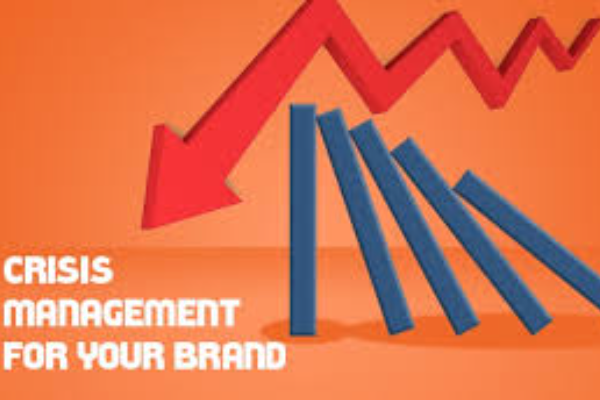Crisis Management and Brand Reputation: How to Protect Your Brand in a Digital World
By Jennifer
In today’s fast-paced digital age, where news travels at lightning speed, businesses face an unprecedented challenge: managing crises while protecting their brand reputation. A single misstep, even one that seems minor at first, can spiral into a major crisis that not only threatens a company’s image but also undermines customer trust and financial health. In this environment, effective crisis management has become crucial for mitigating risks and ensuring that a brand emerges resilient and trustworthy in the eyes of its stakeholders.
Understanding Crisis Management
Crisis management refers to the process of identifying, assessing, and addressing incidents that pose a threat to an organization’s reputation or stability. In a crisis, time is of the essence. A proactive and strategic approach, supported by clear communication and swift action, is key to minimizing damage and steering the company toward recovery. The critical elements of an effective crisis management plan include:
Risk Assessment and Planning: Proactively identify potential threats and prepare for various scenarios. This step involves creating a crisis management plan, assigning roles and responsibilities, and conducting regular crisis drills to ensure readiness.
Response and Communication: Once a crisis hits, the immediate focus should be on executing the crisis management plan. Transparent, consistent, and empathetic communication with stakeholders—including employees, customers, and the media—ensures that everyone is informed and reduces uncertainty.
Monitoring and Detection: Early detection of a crisis can prevent it from escalating. Use social media monitoring, customer feedback systems, and data analytics to identify early warning signs of trouble.
Recovery and Evaluation: After the crisis, it’s crucial to assess the response, address any lingering issues, and take steps to return to normal operations. Evaluating the situation can also help improve preparedness for future crises.
The Role of Communication in Crisis Management
Clear and effective communication is the backbone of any successful crisis management strategy. In the digital era, misinformation and rumors can spread rapidly, exacerbating the crisis. To avoid this, it’s essential to communicate promptly, accurately, and with empathy. Best practices for crisis communication include:
Empathy: Demonstrate understanding and compassion for those affected by the crisis. Showing that you care humanizes the brand and helps maintain customer loyalty.
Transparency: Be honest about the situation. Acknowledge the problem, explain what happened, and detail the steps being taken to resolve it. Avoid withholding information, as secrecy often leads to distrust.
Speed: A quick response is critical. However, speed should not compromise accuracy. Provide timely updates without rushing to give incomplete or incorrect information.
Consistency: Ensure all messaging is aligned across different communication channels and spokespersons. Mixed messages can cause confusion and further damage the brand’s credibility.
Protecting Brand Reputation in a Crisis
Your brand’s reputation is its most valuable asset, and managing it during a crisis can determine your long-term success. How a brand handles a crisis can either restore or tarnish its public image. Here are strategies to protect and rebuild your brand’s reputation post-crisis:
Positive Messaging: Focus on the steps taken to address the crisis and the improvements made. Highlight positive stories about the company’s recovery and growth, which can help shift the narrative from the crisis itself to your commitment to making things right.
Stakeholder Engagement: Engage with stakeholders—customers, employees, investors, and the community—to gather feedback and understand their concerns. Addressing their needs directly shows that you value their opinions and are committed to rebuilding trust.
Swift Rectification: Take immediate action to address the root cause of the crisis. Fixing the underlying issue demonstrates your company’s accountability and prevents the situation from happening again.
Long-term Strategy: Rebuilding reputation is a long-term effort. Consistently deliver on promises, keep your communication transparent, and maintain positive engagement with all stakeholders. Over time, these efforts will restore trust and confidence in your brand.
Case Studies in Crisis Management
To understand how crisis management works in practice, let’s look at two real-world examples.
BP Oil Spill (2010): BP’s handling of the Deepwater Horizon oil spill is often cited as an example of poor crisis management. The company’s initial lack of transparency, slow response, and failure to take full responsibility exacerbated the situation, leading to massive reputational and financial damage. BP’s brand took years to recover, and it became a cautionary tale for businesses worldwide.
Tylenol (1982): In contrast, Johnson & Johnson’s response to the Tylenol tampering crisis is widely regarded as a textbook example of effective crisis management. The company immediately recalled all Tylenol products, communicated openly with the public, and introduced tamper-evident packaging to ensure customer safety. This swift and transparent action restored public trust and set a new standard for crisis management in the pharmaceutical industry.
Conclusion
Crisis management is not just about putting out fires in the moment; it’s about safeguarding your brand and reputation for the long haul. In an era where public perception can change in an instant, companies that prepare thoroughly, communicate clearly, and respond quickly are more likely to emerge from a crisis stronger than before. In today’s hyper-connected world, managing a crisis effectively is not just a strategic advantage—it’s an essential part of maintaining a successful, sustainable brand.

